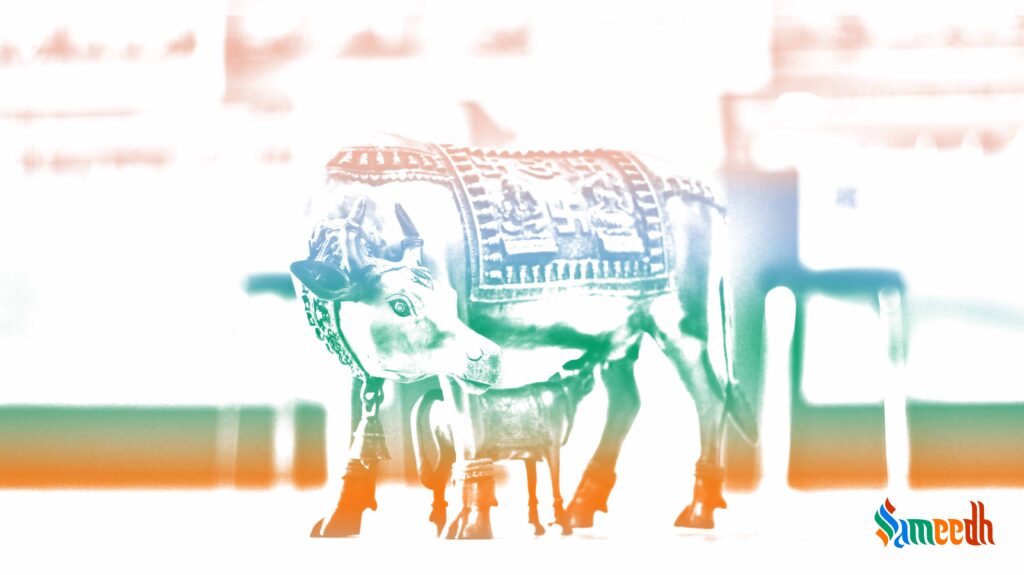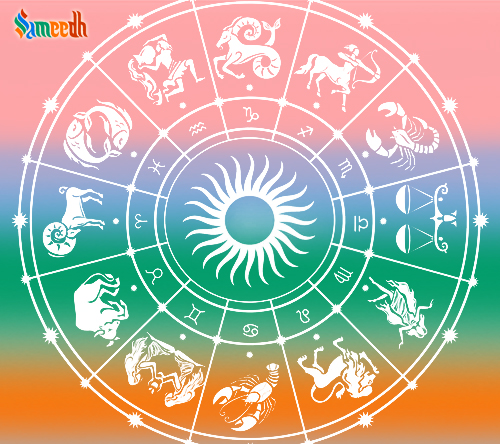Kamdhenu is also referred as Surbhi. She is a miraculous ‘cow of abundance’ who provides her owner whatever he desires. She is usually represented as a white cow with multiple deities inhabiting her body.

Kamdhenu, a celestial sacred cow who answers all prayers, is revered in India. During the samudra-manthan (the tremendous churning of the ocean by the Devtas and Asurs, a heavenly cow from swargalok appeared from the ocean of milk (kshir sagar). The Gods handed it to the Sapt Rishis, and Rishi Vashishth eventually became the owner of the Kamdhenu.
Kamdhenu is also referred as Surbhi. She is a miraculous ‘cow of abundance’ who provides her owner whatever he desires, and she is commonly shown as the mother of other livestock as well as the eleven Rudras. She is usually represented as a white cow with multiple deities inhabiting her body. In Sanatan Dharm, all cows are revered as the worldly manifestation of Kamdhenu. As a result, Kamdhenu is not worshipped as a goddess, and no temples are devoted to her but, she is worshiped by the reverence for cows in general among the devout Hindu community.
Kamadhenu’s skin is as white as the clouds. Every organ of the cow has religious relevance. It has four legs, which represent the four Veds, and her four teats represent the four Purusharthas. It has horns that represent the Devtas, a face that represents the sun and moon, shoulders that represent Agni, and legs represent the mighty Himalayas. In Vedic tradition, ‘Mother Earth’ is represented by a cow, as the cow, like the earth, is an infinite provider of resources and nutrients. We must adore, respect, and defend the cow since she is a mother to humankind. Many creatures, including humans, depend upon her milk for living.
According to a story, King Vishwamitra came to know about the celestial cow living in Rishi Vashishth’s ashram. So, he thought that the cow would be much more useful to a king than to a yogi. But Rishi Vashishth refused to give up the cow, culminating in a battle between the king and him. When the king tried to capture Kamdhenu by force, it is believed that warriors emerged from the Kamdhenu’s body and defeated King Vishwamitra’s army. The king was extremly influenced by the yogic abilities that he decided to renounce his kingdom and went to become a great Rishi through his dedicated penance.
Many verses of the Rig Ved glorify the cow as a sacred animal. The use of dairy products like ghee in sacred Yajna and religious rituals reflects the amount of reverence that cows received during the Vedic period. Those who adore the cow are blessed with great fortune. Worshipping mother Kamdhenu also assists in the purification of their karma from this and previous lives.
Cows are an inseparable part of our culture. We depend on them for milk, ghee, and butter, as well as the urine of the cow is regarded sacred in Sanatan Dharm. Cow’s urine or Gaumutra, is sprinkled in the vicinity of all auspicious occasions. Many houses in rural India still use cow dung as a disinfectant. Cows provide a variety of purposes for mankind at different stages of their lives. Its urine and manure are useful as excellent disinfectants for agricultural purposes, in addition to food items like milk, butter, and ghee.
Bhagwan Shree Krishna was raised in a pastoral society and is well-known as the guardian of cows. Cows are held in such high regard because of the usefulness of milk and milk products in our everyday life. The cow is extremely generous and keeps nourishing humankind. It is the soul that never stops giving. It just consumes water, grass, and grain. It she does not properly nourish its own calf, but feeds mankind, from infants to the elderly with her milk. Thus, the Kamdhenu is referred to as ‘Gaumata’ in the Sanatan Dharm.
